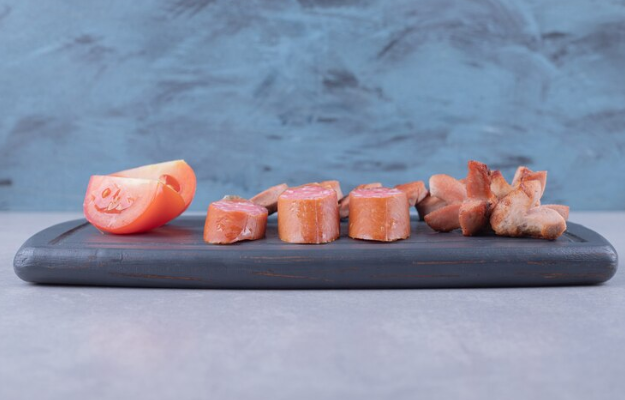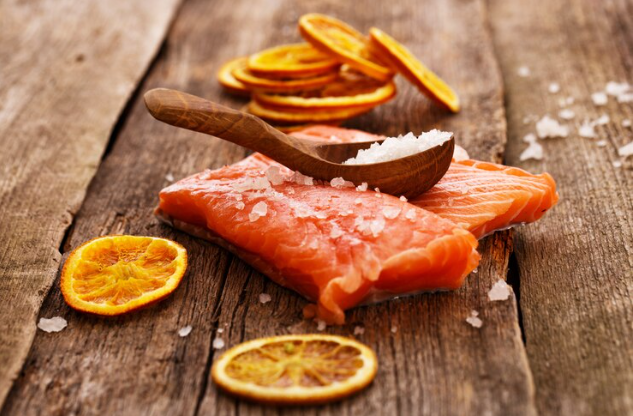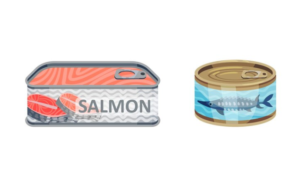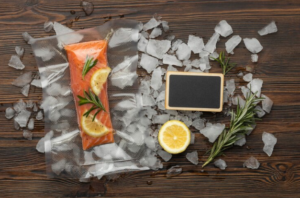Did you know that not only is salmon smoke cooking; but it is also a tradition that is over eight thousand years old? It is safe to say that I have been smoking salmon for several years now, and the pleasure I derive when I prepare and serve my family my own smoked salmon cannot be compared to anything else! I could even go as far as to tell them that there is nothing quite like the taste of homemade smoked salmon to satisfy their love for the delicacy or even win them over!
This guide will ensure that you learn all the tips and tricks regardless of whether you’re a starter or an expert looking to hone your skills further. So, from sourcing salmon to getting the hang of those smoked rings, this guide will encompass all the techniques that are required to prepare salmon which would make your favorite restaurants pale in comparison.

Choosing the Right Salmon for Smoking
Now, the first step in the quest to achieve that perfect salmon texture starts with the selection of the fish itself. Let’s explore the different categories, characteristics, and factors of a quality fish that would make for a perfect smokable salmon.
Types of Salmon Best Suited for Smoking
There are several salmon species to choose from – however, the top three are very interesting to note:
- King (Chinook) Salmon: This type of salmon is high in fat with a buttery flavor. It smokes well and is very tender and flavorful.
- Sockeye Salmon: Quite a popular choice – Sockeye possesses dark-red flesh with pronounced flavor. It’s a bit more on the lean side in comparison to a King but is still a heft.
- Coho Salmon: Although Coho can be more versatile, it is milder than King and Sockeye, and suits nicely for those in search of a nice balance of flavors with smokiness.
Related Articles:
- How Long is Cooked Salmon Good For? Your Ultimate Storage Guide
- How Long To Bake Salmon At 400?
- Can You Freeze Smoked Salmon?
Fresh vs. Frozen Salmon – What to Look For
From the point of smoking, both fresh and frozen salmon can do a good job but these signs of quality would help.
- Fresh Salmon: Should always be brightly colored with a firm structure that smells like the sea as opposed to fish. Eyes should be clear should you be buying a whole fish.
- Frozen Salmon: The salmon must be frozen to maintain quality and prevent freezer burn or ice. Allow it to defrost in a refrigerator to get maximum quality.
How to Identify Quality Salmon (Color, Texture, Smell)
With salmon, depending on the species, a good quality fish should have a nice bright color on it from deep pink to red or orange. It should be tough and not soft and should have a clean mild scent.
Optimal Thickness and Size for Smoking
The salmon should be anywhere between one inch to one and a half inches in thickness. The thickness is appropriate since it allows the smoke to enter the flesh without overcooking the outer portion. If the whole fillet is smoked, then it’s advisable to use the midsection for uniform thickness.
Wild-Caught vs. Farm-Raised Considerations
The advantage of wild-caught salmon is that it possesses a more pronounced flavor and is usually more succulent than its farm-raised counterpart, which is often bland due to the diet provided to it. Wild-caught has become the preferred option when it comes to smoking salmon, however, high-quality farmed fish can still provide excellent results.
Essential Equipment and Supplies
The correct equipment can ease up the smoking process as well as the results that are attained.
Different Types of Smokers
- Electric Smokers: Offers ease of use and convenience by maintaining consistency in temperature control.
- Pellet Smokers: Much superior in terms of smoke flavor and require less babysitting.
- Charcoal Smokers: Gives a great smoky taste but requires more care in terms of temperature maintenance.
Must-Have Tools and Accessories
Make sure to have a good-quality meat thermometer, tongs, an efficient filleting knife, and gloves. This will ensure that your salmon is safe and done effectively.
Best Wood Chips for Smoking Salmon
Alder wood almost always comes out as the best choice because it is classic. It reproduces a light sweet smoke which is quite desirable for salmon. If a stronger taste is required, then apple, cherry, or maple wood is recommended.
Temperature Monitoring Devices
An internal thermometer alongside a thermometer used externally will make sure that you will know and identify when the salmon has perfectly cooked.
Bringing Containers and Storage Equipment
Salmon should be packed in large, food-safe containers for brining and any leftovers should be stored in freezer bags or vacuum-seal bags.
The Perfect Brine Recipe and Process
The process of brining serves to strengthen moisture retention as well as add flavor. In general, there are two categories: a wet brine and a dry brine.
Basic Brine Ingredients and Measurements
One part kosher salt grain to four parts water, brown sugar, and four cups sugar is all that is needed for a rapid pale wet brine, remember to scale it as needed. This is also equal to four tablespoons of sugar one cup of salt to two cups of sugar.
Dry Brine vs. Wet Brine Comparison
- Wet Brine: Wet brine helps to keep fish moist on account of the extra moisture, as well as gives a firm texture.
- Dry Brine: Dry Brine draws out natural oil from the fish and this serves to be a source for deeper flavors and strong colors.
How Long to Brine Based on Fish Thickness
For salmon fillets 1 inch thick, 8-12 hours brining is recommended. And up to 24 hours with even thicker cuts.
Optional Flavor Additions and Variations
lemon zest and dill or herbs such as garlic can be added to enhance the taste of the dish.
Signs Your Salmon Is Properly Brined
Ideally, after brining, the salmon will be firm and somewhat dark in color.
Preparing Your Salmon for the Smoker
Step-by-Step Cleaning and Trimming Process
Remove any remaining scales or bones, and trim off any ragged edges. Pat the fillets dry after rinsing.
Forming the Pellicle – Why It’s Crucial
Allowing the salmon to air-dry in the fridge for 1-2 hours creates a tacky layer called the pellicle, essential for smoke adhesion and flavor infusion.
Seasoning Options and Techniques
A light coating of cracked pepper or dill can enhance the flavor but doesn’t overpower the salmon. Keep it simple.
Common Mistakes to Avoid
Avoid over-brining, which can make the salmon too salty. Also, make sure to form the pellicle—skipping this step can lead to a soggy texture.
Food Safety Considerations
Keep everything clean, and don’t let raw salmon sit out at room temperature for too long before smoking.
The Smoking Process: Temperature and Time Guide
Ideal Smoking Temperatures at Each Stage
The initial temperature for the first hour should be 120°F, then raise it to about 160°F to complete the process. This ensures that the fish is not dried but is cooked at a slow pace.
Total Smoking Duration Expectations
In general, expect around 4 to 6 hours noticing thickness and the amount of smoke desired.
How to Maintain Consistent Temperature
Pay attention to the temperature of the smoker and control the vents or increase the charcoal or pellet in measure to maintain the temperature.
When to Add More Wood Chips
Introduce wood chips around every 45 minutes or so for a continuous stream of smoke but do not smoke too much.
Signs Your Salmon Is Perfectly Done
Salmon should be segregated from the bones and should easily come apart however should not be dry inside. A temperature of 145°F on the inside indicates that it is ready.
Storage and Serving Suggestions
Proper Cooling and Resting Procedures
Let the salmon smoke drip for 30 to 45 minutes once removed from the tumbler. It allows the flavor to settle and keeps condensation from forming inside the contained environment during storage.
Storage Methods and Shelf Life
Keep it for a week in a fridge if vacuum packed then it can stay good and fresh for about three months outside of the fridge.
Best Serving Temperatures
Serve the smoked salmon dip in the cold state or at room temperature, in this way, the real taste and quality are retained.
Creative Serving Ideas and Pairings
Tried pairing smoked salmon with cream cheese, capers, and a bagel, or with a salad, eggs, or pasta for some variety.
How to Freeze Smoked Salmon Properly
To retain the taste and consistency, wrap it well in plastic then store it in a freezer-safe airtight container or freezer bag.
These tips will help you smoke salmon from start to end like a pro, from choosing the right salmon to serving it. Have fun and relish every delicious, smoky, frosty bite you take.
Well, now you are well versed and ready with all the information to prepare excellent smoked salmon in the comfort of your home. Remember, practice makes perfect, so don’t beat yourself up if your first-ever attempt isn’t that of a nice restaurant.
Consistency in temperature as well as the time taken is the key. What are you waiting for, call your friends over this weekend and demonstrate what you have learned in terms of smoking salmon. The day you will learn this method, you will never return to purchasing smoked salmon in stores.



